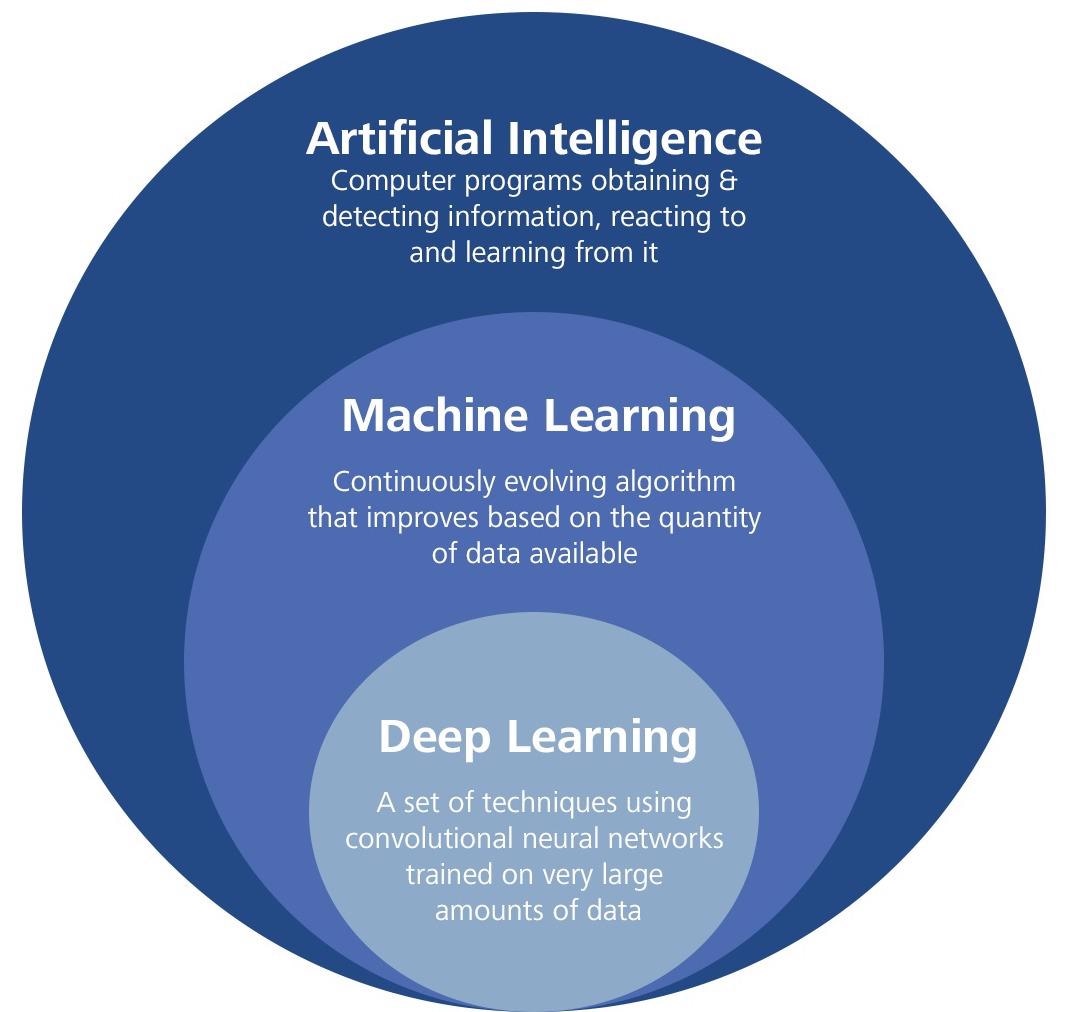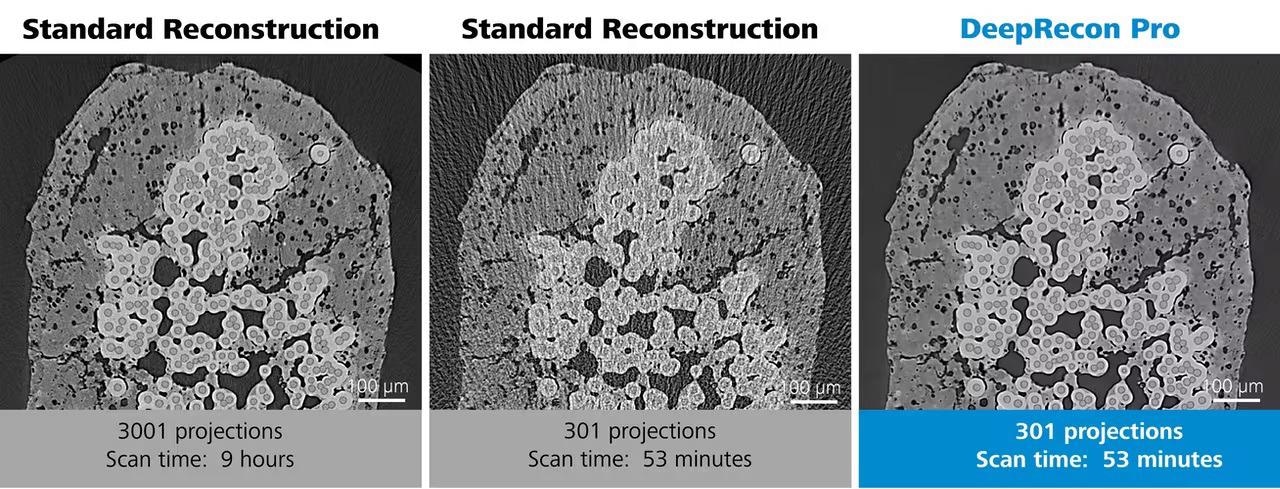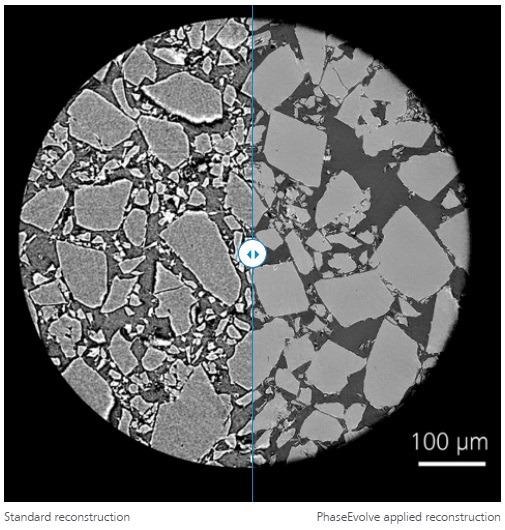On your ZEISS Xradia 3D X-Ray microscope (XRM) or microCT, the Advanced Reconstruction Toolbox (ART) delivers Artificial Intelligence (AI)-driven reconstruction methods. Users may address some of the most difficult imaging difficulties in new and imaginative ways if they have a thorough understanding of both X-Ray physics and applications.

Artificial Intelligence (AI)-driven reconstruction technologies. Image Credit: Carl Zeiss Microscopy GmbH
Learn how OptiRecon, two variations of DeepRecon and PhaseEvolve, the distinctive modules of ART, improve data acquisition, reconstruction speed and picture quality without losing resolution.
Users can use the Advanced Reconstruction Toolbox to:
- Improve data collection and analysis for accurate and faster decision-making
- Greatly boost image quality
- Accomplish superior interior tomography or throughput on a wide variety of samples
- Reveal subtle differences through enhanced contrast-to-noise
- Increase speed at an order of magnitude for sample classes requiring repetitive workflow
ZEISS DeepRecon Pro provides a straightforward, uncomplicated, and powerful application of AI and deep neural network technology for enhancing X-Ray tomography results without prior knowledge of deep learning technology. It helps us to reduce the scan time required for in situ fluid-rock interaction experiments when we need to work with long exposure times.
Dr. Markus Ohl, X-Ray microscopy, EPOS-NL MINT, Utrecht University
ZEISS DeepRecon
ZEISS DeepRecon Pro and Custom for Deep learning-based reconstruction
Increase the Speed of Data Acquisition with Reconstruction Technology
DeepRecon technology is available in two versions: DeepRecon Pro and DeepRecon Custom, both of which use AI to improve image quality and speed. RaaD (resolution-at-a-distance) can be increased without losing throughput. Keep the same amount of projections and improve the visual quality even further.

DeepRecon Pro was used for throughput improvement for Ceramic Matrix Composite (CMC) sample, achieving 10× throughput improvement without sacrificing image quality. This would allow for much higher temporal resolution for in situ studies. Left: Standard reconstruction (FDK): Scan time 9 hrs (3001 projections). Center: Standard reconstruction (FDK): Scan time 53 mins (301 projections). Right: DeepRecon Pro: Scan time 53 mins (301 projections). Image Credit: Carl Zeiss Microscopy GmbH
Find out the difference:
- Across a variety of applications, DeepRecon Pro provides higher throughput and image quality.
- It improves contrast-to-noise, allowing users to see minor differences in the samples’ photos.
- For sample classes that need a repeating procedure, increase the pace of data collecting by up to 10 times.
- Apply DeepRecon Pro to exceptional samples, to semi-repetitive and repetitive workflows.
- Now users can self-train new machine learning network models on-site with an easy-to-use interface.
- The need for a machine-learning expert is thus eradicated and even a novice user can seamlessly operate DeepRecon Pro.
- ZEISS DeepRecon Custom is targeted precisely for repetitive workflow applications to further increase XRM performance beyond DeepRecon Pro.
- ZEISS collaborates closely with users to progress custom-created network models that fit their monotonous application needs precisely.
ZEISS OptiRecon for iterative reconstruction
Similar Results, 4x Faster
ZEISS OptiRecon is an iterative reconstruction approach that significantly improves acquisition throughput while maintaining picture quality.
- Get up to four times faster scan rates or better image quality with the same throughput.
- Take advantage of this cost-effective technology that provides greater interior tomography or throughput on a wide range of samples.

Observe the performance of OptiRecon in a workflow performed on an electronics sample. Analyze integration issues in a smartphone camera lens, now 4× faster. Left: Standard reconstruction: Scan time 90 minutes (1200 projections). Center: Standard reconstruction: Scan time 22 minutes (300 projections). Right: OptiRecon: Scan time 22 minutes (300 projections). Image Credit: Carl Zeiss Microscopy GmbH
ZEISS PhaseEvolve
ZEISS PhaseEvolve for contrast enhancement
Suppose phase effects overprint the picture contrast that is known to be specific to X-Ray microscopy in low-medium density samples or high-resolution datasets?
- Use PhaseEvolve, a reconstruction algorithm for post-processing. It allows users to improve the contrast of the image.
- Enhance the contrast and segmentation of the data for a more reliable statistical analysis
An application of PhaseEvolve on a pharmaceutical powder sample is shown on the right. Phase-contrast aberrations can mask natural material contrast when imaging at high resolution or low kV. To increase image contrast and segmentation performance, PhaseEvolve successfully removes phase fringes.

The image on the right shows an application of PhaseEvolve to a pharmaceutical powder sample. High resolution or low kV imaging can result in inherent material contrast being obscured by phase contrast artifacts. PhaseEvolve effectively removes phase fringes to enhance image contrast and improve segmentation results. Image Credit: Carl Zeiss Microscopy GmbH